Get 100 Views, 25 Credits & Free Monthly Recharge
Get 100 Views, 25 Credits & Free Monthly Recharge
+ 4 Sales Targeting Tools



Have you wondered why after all that work, most of your leads are still not the right fit for your business?
Not all leads are equal.
Sales targeting is a strategic approach in marketing and sales that involves focusing efforts on a specific group of potential customers who are more likely to be interested in a product or service.
Rather than taking a broad and generic approach, sales targeting aims to identify and prioritize certain segments of the market that are most likely to convert into customers.
To do this, one must understand the characteristics, needs, and behaviors of the target audience.
Identifying and categorizing potential customers into distinct groups based on demographics, behaviors, preferences, and other relevant criteria.
This segmentation helps in customizing marketing messages and strategies for each specific group.
Developing a detailed profile of the ideal customer by considering factors such as industry, company size, job title, pain points, and challenges. This profile serves as a guide for targeting efforts towards customers who are the best fit for the product or service.
Utilizing data and analytics to gain insights into customer behavior, preferences, and trends. Analyzing this data helps in making informed decisions about where to direct sales and marketing resources for maximum impact.
Creating targeted and personalized marketing campaigns that speak directly to the needs and interests of the identified customer segments. This can include personalized content, messaging, and offers.
Implementing a multi-channel approach to reach potential customers through various platforms such as social media, email, content marketing, and more. This ensures that the target audience is reached through channels they prefer and frequent.
Regularly reviewing and refining the sales targeting strategy based on performance metrics and feedback. This iterative process allows for optimization and adaptation to changes in the market or customer behavior.
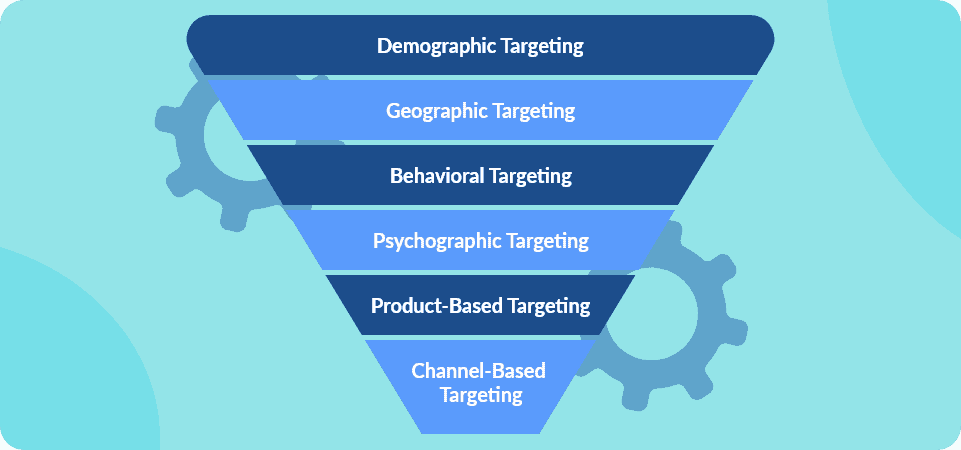
Sales targeting involves directing your marketing and sales efforts toward specific groups of potential customers. Diversifying your sales targeting strategies allows you to focus on relevant segments.
Consider these 6 key types of sales targeting to create your ideal customer profiles:

Segmenting the market based on demographic factors such as age, gender, income, education, marital status, and other measurable characteristics. This helps tailor marketing messages to specific groups.

Focusing on customers in a particular geographic area, whether it’s a specific city, region, or country. This approach is valuable for businesses with products or services that have regional relevance.

Analyzing customer behaviors, including their online activities, purchase history, and interactions with a brand. This type of targeting allows businesses to personalize marketing messages based on individual behaviors.

Segmenting the market based on psychological and lifestyle factors such as interests, values, attitudes, and personality traits. This helps create marketing messages that resonate with the target audience’s motivations and preferences.

Focusing on customers interested in a particular product or product category. This approach tailors marketing messages to highlight the features and benefits of specific offerings.

Directing marketing efforts toward specific channels or platforms where the target audience is most active. This can include social media platforms, email marketing, or other communication channels.

By identifying and focusing on your target customers, you can use your time and resources more efficiently, increase your conversion rates, boost your revenue, and gain a better understanding of your customers.
Here’s why you should consider building a sales targeting strategy before moving on to sales outreaching of any kind.

Sales targeting enables businesses to allocate their resources more efficiently. Instead of employing a one-size-fits-all approach, companies can direct their marketing and sales efforts toward specific customer segments that are more likely to convert.

By focusing on a well-defined and relevant audience, sales targeting increases the likelihood of converting leads into customers.
Tailoring messages to the specific needs, preferences, and pain points of the target audience enhances the resonance of marketing campaigns, ultimately driving higher conversion rates.

Sales targeting involves a deep understanding of the target audience, including their demographics, behaviors, and preferences.
This knowledge not only helps in crafting personalized marketing messages but also in developing products and services that better meet the needs of the customers.

Targeting the right audience fosters stronger connections with customers. When businesses understand their customers on a granular level, they can offer personalized experiences, loyalty programs, and ongoing engagement initiatives, contributing to higher customer retention rates.

A well-executed sales targeting strategy provides a competitive edge. Businesses that can effectively reach and engage their ideal customers are more likely to stand out in the market, especially if competitors are still using broad and undifferentiated marketing approaches.

Sales targeting allows for the measurement of specific key performance indicators (KPIs) related to targeted segments.
This data-driven approach enables businesses to analyze the success of their strategies, make informed decisions, and refine their targeting based on real-time insights.

Customers today value personalization. Sales targeting allows businesses to tailor their communication and offerings to individual customer segments, creating a more personalized and engaging experience. This personal touch enhances customer satisfaction and loyalty.

Markets are dynamic, and consumer preferences can change rapidly. Sales targeting provides a framework that allows businesses to adapt quickly to these changes.
By continuously analyzing data and market trends, companies can refine their targeting strategies to stay relevant.

Focusing on the most promising leads and high-potential customer segments maximizes the return on investment. Instead of spreading resources thinly across a broad market, businesses can concentrate their efforts where they are most likely to yield results.

Sales targeting ensures that marketing and sales efforts are aligned with overall business goals.
Whether the objective is to increase market share, launch a new product, or expand into a specific market segment, sales targeting provides a strategic roadmap to achieve these objectives.
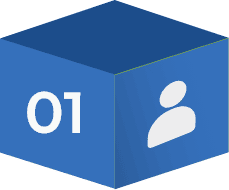
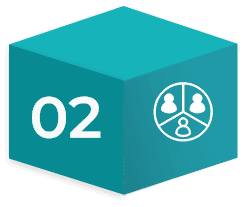
Once you have a well-defined ICP, segment your broader audience based on shared characteristics. This allows you to tailor your marketing messages and sales approach to specific groups.
Consider factors such as industry, company size, geographic location, and buyer behavior. These segments will form the basis for your targeted campaigns.
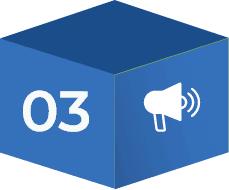
Create personalized marketing campaigns tailored to each segment of your audience. Craft messages, content, and offers that speak directly to the needs and pain points of each segment.
Utilize various marketing channels, including email, social media, content marketing, and advertising, to reach your target audience where they are most active. Personalization enhances engagement and increases the likelihood of conversion.

Any given audience utilizes various channels to engage with content and information about products and services. Increase your visibility through social media, email, search engines, industry events, and more to help you connect with potential customers at different stages of the buying journey.

Continuously evaluate your working sales targeting strategy to see what’s working. Monitor key performance indicators (KPIs) related to each segment and campaign.
Regularly assess the effectiveness of your strategy, gather feedback, and adjust for evolving needs of your target audience and changes in the market.

No strategy is complete without metrics to measure its effectiveness. Here are 7 key metrics and methods to help you assess the success of your sales targeting strategy.

Track the conversion rates for each targeted segment. Measure how many leads from each segment progress through the sales funnel and ultimately convert into paying customers.
A higher conversion rate indicates that your targeting strategy is resonating with the right audience.

This is the cost of acquiring a customer for each targeted segment. Compare this with the average customer lifetime value to ensure that your investment in targeting specific segments is yielding positive returns.
A decreasing CAC over time can indicate improved targeting efficiency.

Evaluate the overall return on investment for your sales targeting strategy. Consider the revenue generated from the targeted segments against the costs associated with marketing and sales efforts.
A positive ROI indicates that your strategy is contributing to the financial success of your business.

Monitor the retention rates of customers within each targeted segment. A successful targeting strategy not only acquires new customers but also retains existing ones.
High retention rates suggest that your strategy is aligning with the long-term needs and satisfaction of your target audience.


Gather feedback directly from customers within your targeted segments. Use surveys or customer interviews to understand their satisfaction levels, pain points, and expectations.
Positive feedback and high satisfaction scores indicate that your targeting strategy is meeting customer needs.

Analyze website and social media analytics to understand the engagement levels of your targeted segments.
Look at metrics such as website visits, time spent on pages, social media interactions, and click-through rates. Higher engagement suggests that your content resonates with the target audience.

Several sales targeting tools are available to help businesses identify, reach, and engage with their target audience more effectively. The best tool for your needs may depend on factors such as your industry, business size, and your sales goals.
Here are 5 popular sales targeting tools with diverse features for segmentation, targeting and personalization.
ReachStream is a B2B sales and marketing data platform which lets you build segmented contact lists for targeted sales outreach using 20+ contact and company insights.
Create a freemium account to start using the platform.
Filter
Sign in to your ReachStream account.
Use custom contact and company filters in the left filter panel to select your ideal customer criteria. Filter with further segmentation criteria for targeted results.
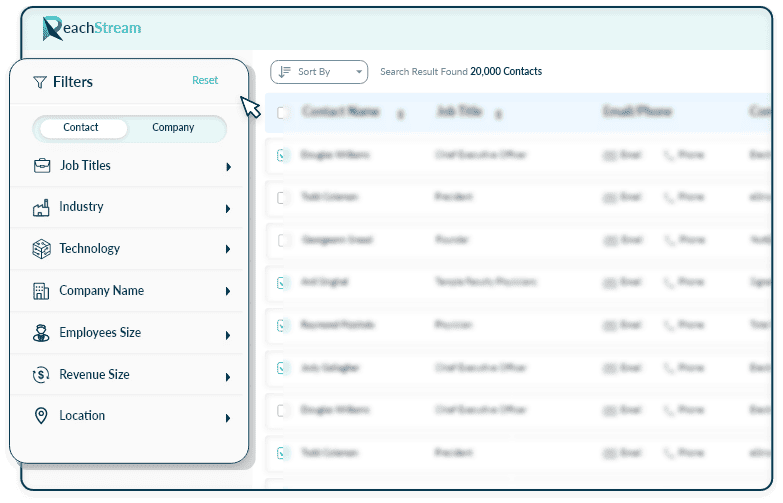
View Profiles
From the search results, select contact or company profiles that match your ICPs to create segmented prospects lists. View their information by selecting the View Details icon.
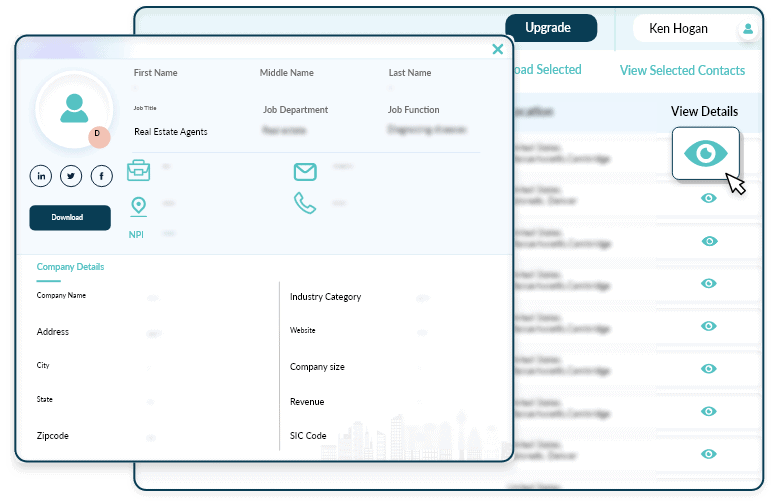
Each profile contains 20+ contact and company insights.
Download List
View your list by going to View Selected Contacts. Click on Download Selected and your list will be downloaded in an XLS file. Import all 20+ data attributes to your CRM software.

Try ReachStream for free. ReachStream Freemium offers all the features available on its premium plan, including advanced API access for developers.
In sales, targeting involves identifying and directing sales and marketing efforts towards individuals or organizations that are more likely to be interested in a product or service.
Targeting aims to maximize the efficiency and effectiveness of sales initiatives by tailoring messages and approaches to resonate with a predefined audience.
A sales target is a measurable goal set by a sales team to be achieved within a specified period. An example of a sales target could be to increase monthly sales revenue by 15%, acquire 50 new customers in the next quarter, or achieve a 20% growth in market share over the next year.
Setting effective sales targets involves
Research, data and strategic planning can help you find your sales targets. To do this, follow these steps:
In Salesforce, a sales team refers to a group of individuals within an organization responsible for selling products or services. The sales team in Salesforce collaborates on deals, tracks communication with prospects, and utilizes various functionalities to streamline the sales process and drive revenue.
Location targeting in sales involves directing marketing and sales efforts toward specific geographic areas. This strategy recognizes that customer preferences, behaviors, and needs can vary based on location.
Businesses use location targeting to tailor their messages and campaigns to resonate with the characteristics of a particular region, city, or demographic area to increase the relevance of their offerings.
Account targeting, often associated with Account-Based Marketing (ABM), involves a focused strategy where sales and marketing teams collaborate to target and engage specific high-value accounts or customers.
Instead of casting a wide net, account targeting identifies key accounts that align with the ideal customer profile. This approach emphasizes personalized and tailored efforts to nurture relationships, deliver targeted content, and ultimately drive sales with strategic accounts.

Enrich your acumen with the latest research, think-pieces,
expert insights, and more.